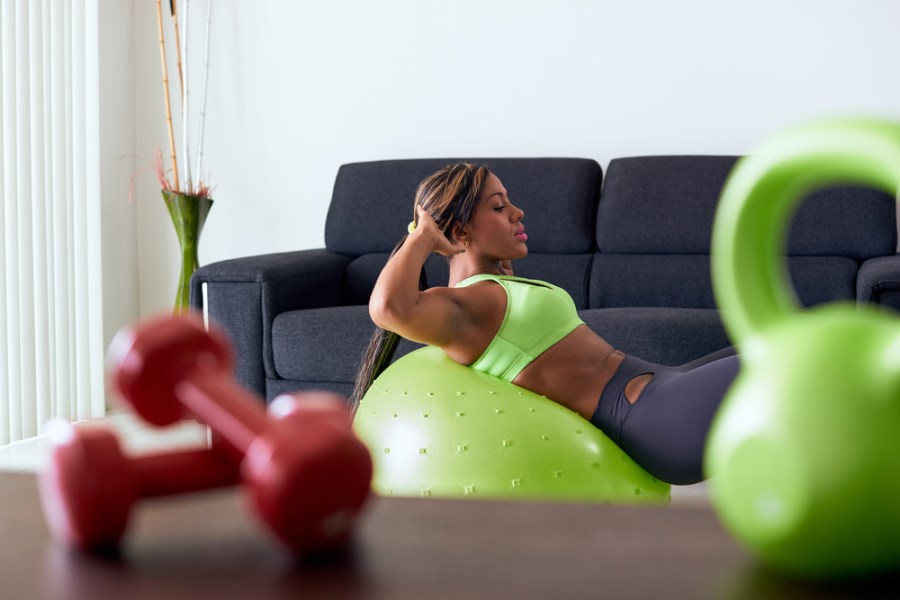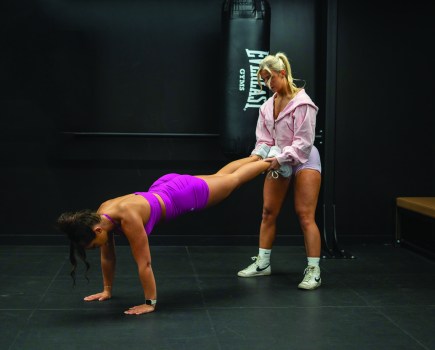There are so many benefits to be had from doing regular ab workouts for women besides a flat stomach and whittled waist. If you’re looking to target your abdominal muscles, read on for our ultimate guide to abs training, including our pick of the best workouts to target your core…
Your abs impact everything you do, from the way you sit, stand, walk, and run to your posture and performance at the gym. So, if you want to lift heavy weights, pick up your kids with ease, be free from back pain and have a fit, healthy body that moves freely, you need to start incorporating the best ab workouts for women into your life pronto.
Not sure where to start? Fear not! Here, we deep dive into the science behind building a strong set of abs, reveal the facts you should know about training your core safely and effectively, and share our top workout tutorials from the experts so all you need to do is grab a mat and start exercising!
The anatomy of your abs
Contrary to popular belief, your abs are more than just one muscle group. Located between the ribs and the pelvis, your abdominals are made up of four muscle groups that work together to hold your internal organs in place, support the trunk of your body, and allow movement.
The four main abdominal muscle groups are:
1. Transversus abdominis
This is your deepest abdominal muscle layer, and it runs across your torso from side to side to stabilise your pelvis and trunk, hold your ribs in place, and maintain internal abdominal pressure on your organs
2. Internal obliques
Your internal obliques lie on top of the transversus abdominus, and just underneath the external obliques. Running diagonally up your sides between your hips and ribs, they allow you to bend and rotate to the side. They also work in the opposite way to your external obliques. So, if you twist your trunk to the right, your internal oblique on the right side and the external oblique on the left side will contact together to stabilise the movement.
3. External obliques
These muscles lie above the internal obliques and form the outer layer of your abdominals on the sides of your body. The external obliques run diagonally downwards in the opposite direction to your internal obliques to help you bend and twist your torso.
4. Rectus abdominus
Slung between the ribs and the pubic bone, the rectus abdominis is a sheet of muscle that runs vertically on either side of the abdomen, separated in the middle by a band of connective tissue called the linea alba. This line, and those that run horizontally across the muscle, separate the rectus abdominus into segments. When contracted, these segments form eight bumps that are often referred to as a ‘six-pack’ (the two lower segments, or ‘lower ab’ muscles, aren’t visible unless you’re naked). The main function of the rectus abdominus is to flex the body forwards.
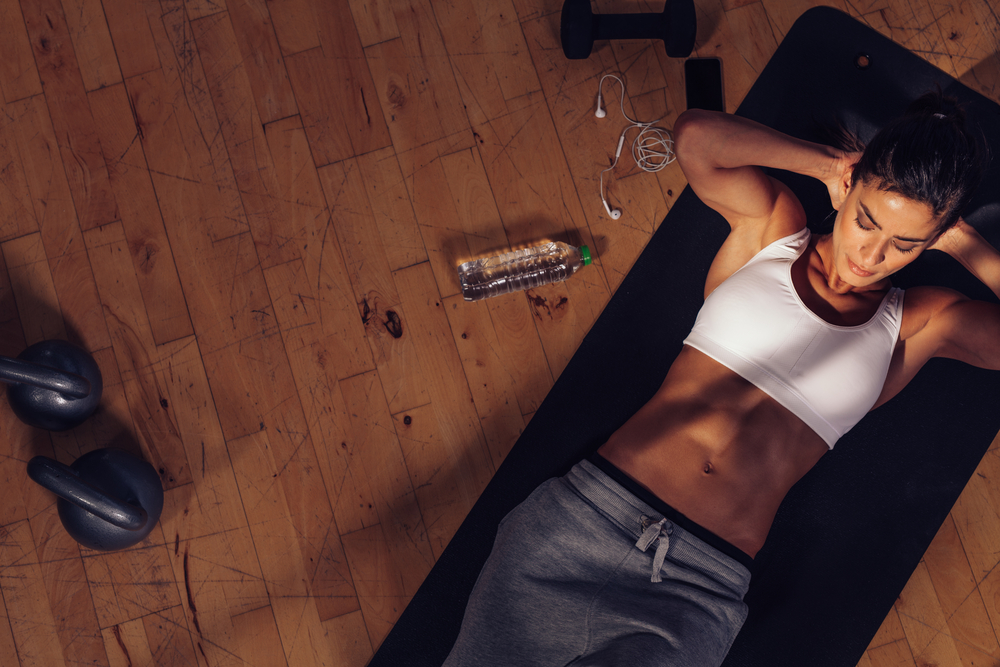
Benefits of ab workouts for women
Now you understand the anatomy of your abs, let’s explore the many benefits to be had from incorporating the best ab workouts for women into your exercise regime.
Your deeper abdominal muscles, such as the transversus abdominis and the internal obliques, work together with your deeper back muscles to form your core: a group of muscles that link the upper body and lower body together and to create a foundation for all movement and activity.
A stronger core can help you:
- Protect, stabilise, and mobilise your spine
- Boost your strength and endurance
- Prevent and reduce back pain
- Move freely and improve coordination
- Improve balance, reduce the risk of falls, and prevent injury
- Increase your ability to perform everyday tasks, including lifting heavy objects
- Strengthen weak postural muscles
- Improve sporting performance and exercise technique
- Reduce pain in other areas of the body
- Keep your body in an optimal position so it works efficiently
What do ab workouts do?
Ab workouts focus on the four main abdominal muscle groups, some of which contribute to make up the core. Training these muscles and your core regularly will help you to build better abdominal strength and develop a more stable and supportive core that will help you move efficiently.
If you want a flatter stomach and toned torso, regular ab workouts for women can help you reach your goal. However, this is only true if you combine your ab exercises with a healthy diet and consistent cardio workouts to create a calorie deficit and reduce your overall body fat. Abdominal exercises will not help you to burn fat or reduce the size of your midsection alone.
While it’s always good to have a goal, a more worthwhile and satisfying objective might be to train your abs to improve your overall quality of life, rather than simply trying to get a six-pack. That’s because all our movements – from standing, sitting, walking, and running to bending forwards, reaching upwards and twisting around – are powered by our core and abdominal muscles.
In short, our abdominal muscles play a crucial role in helping you to move your body. So, it’s essential that you train your abs regularly if you want to lead a fit, healthy, active lifestyle.
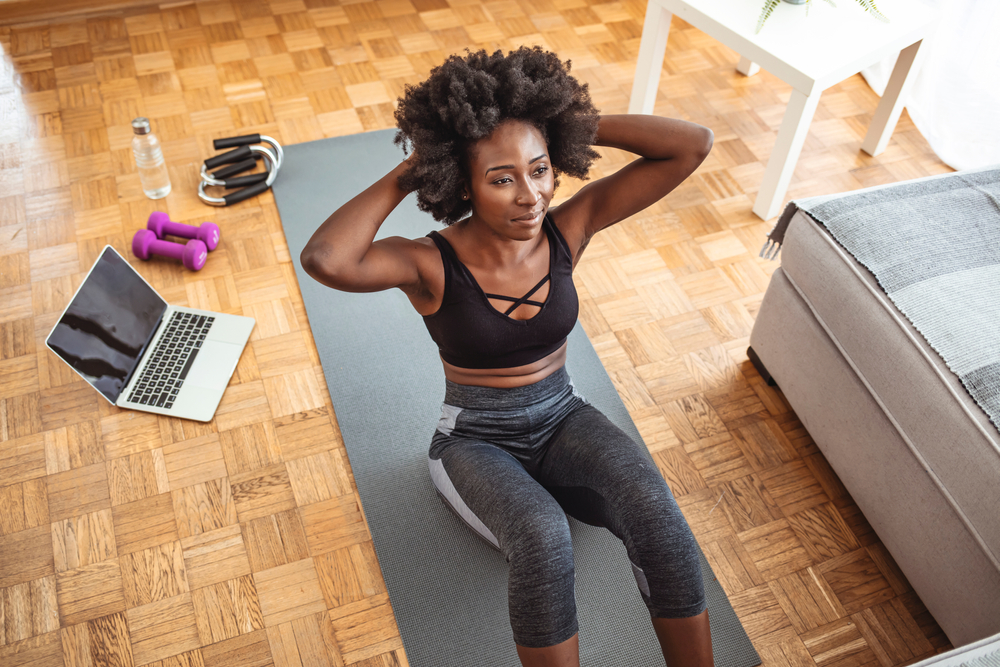
Targeting the different ab muscles
Most importantly, your ab workouts for women need to incorporate a variety of exercises that target different areas of the abdominals and core – not just those six-pack muscles at the front.
‘The four main groups of abdominals work together with the muscles in the lower back to cause different movements of the spine – such as flexion, extension and rotation. This is why abdominal work isn’t as simple as just doing crunches!’ says Hollie Grant, Pre & Postnatal fitness expert and founder of Pilates PT.
‘All these muscles need to work together. That includes the pelvic floor, which is also part of the core, acting as a stabiliser along with the transverse abdominals. If one of these groups is stronger than the other, i.e., you’re doing loads of crunches and not strengthening the lower back, this can change the shape of your spine and your posture. This, in turn, can potentially lead to imbalances that could cause pain.’
How often should you do ab workouts?
Your abdominal muscles work in the exact same way as the other muscles of your body, growing bigger and stronger over time when you train them progressively by increasing the resistance or intensity.
Therefore, you should train your abs in the same way as you would train your arms, legs, back or chest. That means exercising your abs two to three times a week – keeping in line with current strength training guidelines – and making sure you rest your abs in between workouts to avoid placing them under any unnecessary strain that could lead to injury.
That said, do bear in mind that your core muscles are technically in use all day, every day. This means they are very used to being fatigued and even overloaded since they support your daily movements constantly. For this reason, it’s perfectly okay to practicing some daily mobility and stability core exercises – such as Planks, Inchworms and Dead Bugs – alongside some stretching to keep your core in good working order.
Moreover, when you do follow one of our ab workouts for women, remember to think quality over quantity and focus on maintaining good form. Performing 30 crunches using a slow and controlled technique is much better than racing through 100 crunches with bad form and potentially using momentum to power the movement, rather than your abs.
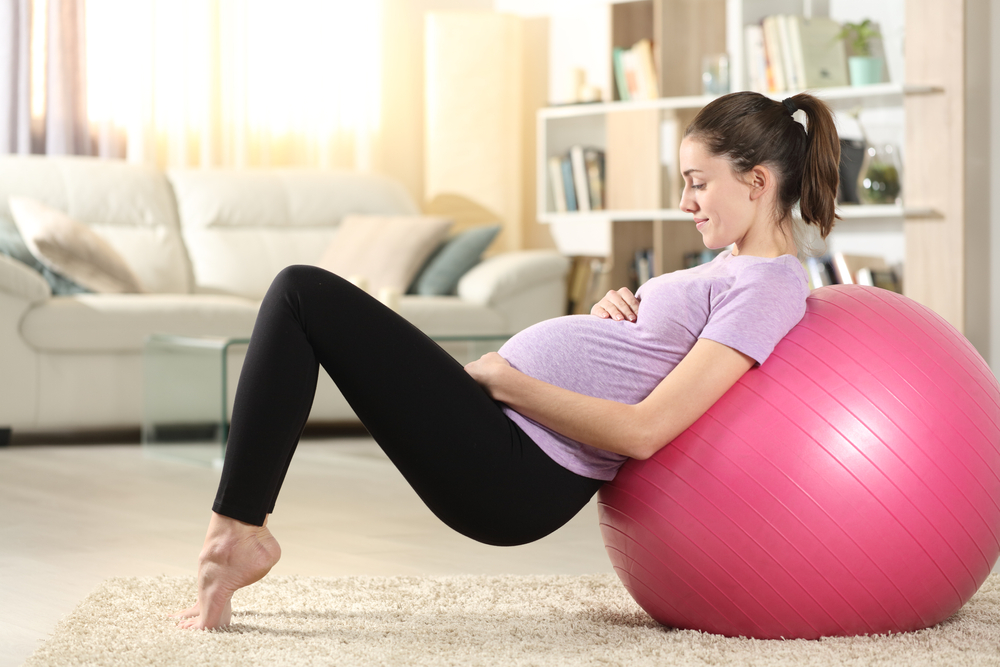
Can you do ab workouts when pregnant?
Health and fitness professionals recommend that you work on your core strength during pregnancy to help support and stabilise your body as its contents get a little heavier each day and your centre of gravity changes. That said, pregnant women must adapt their abdominal training during pregnancy to safely accommodate their growing bump.
‘In the first trimester, many women feel comfortable continuing with the types of exercise they have previously done, whether that be cardio, yoga, or Pilates, etc,’ explains The Bump Plan creator, Grant. ‘This is completely safe, although some women find the 1st trimester the most physically demanding due to low energy or nausea. So, they may prefer to reduce the frequency or intensity of their workouts’.
Ab workouts after your 1st trimester:
By weeks 14 to 16, however, Grant says that lying flat on your back for longer than three minutes isn’t advised. This is due to the increased risk of Supine Hypotensive Syndrome, which can leave you feeling dizzy, clammy and short of breath.
‘Instead, aim for exercise positions such as side lying, four-point kneeling, or standing, which are far more functional anyway,’ she suggests. ‘This may mean you need use props to help elevate you when in your usual Pilates or Yoga class. Or you might switch to a prenatal specific class.’
Lastly, says Grant, you should bear in mind during pregnancy that ‘around 100 per cent of us will develop Diastasis Rectus Abdominis: a completely normal and functional separation of the Rectus Abdominis muscle (those six-pack abs). We want to try to allow these natural changes to take place, whilst keeping the core strong. So, I advise women to turn their attention to their Transversus Abdominis muscle and their pelvic floor, to really help support a growing bump and prepare the body for the demands of motherhood. Strength-based workouts such as Pilates or weight training can be beneficial here at ensuring the postural muscles stay active.’
Read more: Fitness during pregnancy: how to exercise safely
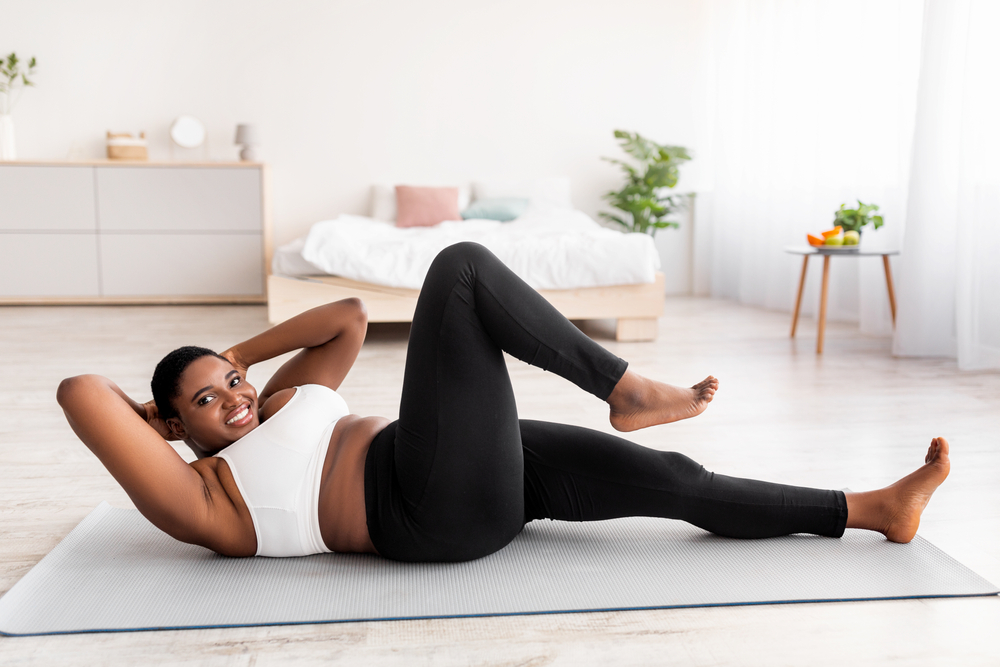
Ab workout tips for better performance
1. Comfort is key
Let’s face it, ab exercises aren’t the most comfortable exercises to perform. This is true whether you’re lying on your back or side or kneeling on all fours. But a well-padded exercise mat will help to reduce any discomfort placed on certain pressure points, such as your lower back, neck, shoulders, hips, and knees. This means you can concentrate fully on exercising with good form.
2. Increase the intensity
When you’re ready to take your ab exercises up a level, you’ll need to increase the resistance. Do this by increasing the difficulty of your exercises, adding ankle weights to lower abdominal exercises, and incorporating dumbbells, kettlebells, resistance bands and medicine balls when you train your upper abs, obliques and core.
3. Train weaker areas first
If you always begin your ab workouts for women by training your strongest abs muscles first, i.e., doing crunches to work your rectus abdominus, you might not have enough strength left to train other areas effectively when it’s time to do planks to work your transversus abdominus, or reverse crunches to work your lower abs. We suggest you train your weakest abdominal muscles first so you can improve the quality of each rep and set before moving onto your stronger muscles.
4. Record your progress
Results take time to appear with any exercise programme. Your stomach might not be noticeably flatter after a few weeks or even months, but that doesn’t mean you aren’t making great gains in terms of your abdominal strength and core stability. Keep a record of your ab workouts for women, noting any increases you make in your reps, sets, resistance used and level of difficultly. Recognise that your efforts are helping you to get stronger, fitter, and healthier.
5. Activate your abs
Core training doesn’t have to stop once your workout has finished. Your core should be pulled in at around 30 per cent to support your back, prevent injury and help you stand tall with better posture. Find the right level by pulling your abs in 100 per cent, relax and pull them in about 50 per cent. Then, relax again, draw your abs into about 30 per cent, and maintain this level as you sit, stand, walk, or do other types of exercise such as dancing or running.
Best ab workouts for women
There are many different types of ab workouts for women you can do, with options suitable for all fitness levels and abilities. Here are some of our favourites!
Pilates ab workout: best exercises for a strong core
Cardio abs workout: burn belly fat & tone your midriff
How to tone your core muscles: bodyweight workout
How to tone your stomach: best exercises and workouts
Words: Joanna Ebsworth | Images: Shutterstock

